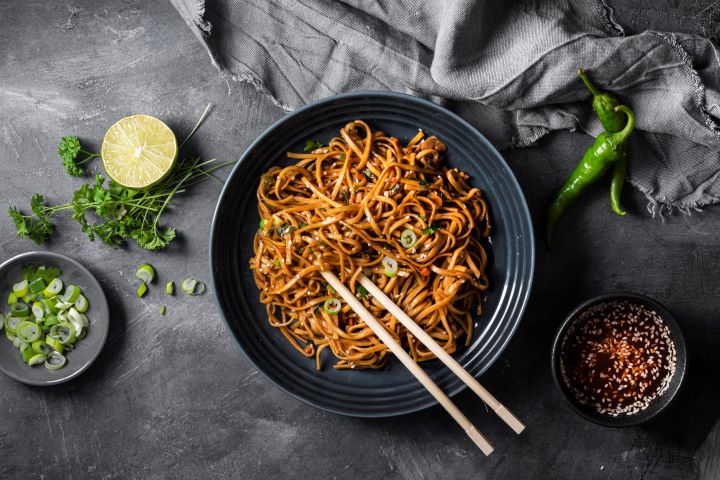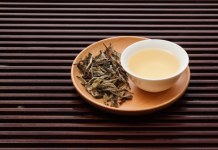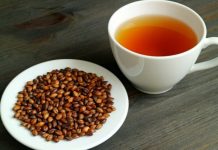For pasta lovers who crave the comforting embrace of noodles without the guilt of excess carbs and calories, shirataki noodles emerge as a revolutionary and waistline-friendly solution. Derived from the konjac yam, these translucent and gelatinous noodles have taken the culinary world by storm, offering a low-calorie, low-carb, and gluten-free alternative to traditional pasta. In this blog, we delve into the fascinating world of shirataki noodles, exploring their origins, nutritional benefits, and delightful ways to incorporate them into a variety of dishes.
Shirataki Noodles: The Origins and Production
Shirataki noodles, also known as konjac noodles, hail from East Asia, particularly Japan and China, where the konjac yam (Amorphophallus konjac) has been cultivated for centuries. The yam’s starchy corm is processed to create a flour called konjac flour or glucomannan flour, which forms the basis of shirataki noodles.
To make these miraculous noodles, the konjac flour is mixed with water and a small amount of calcium hydroxide or calcium oxide to create a gel-like substance. This gel is then extruded into noodle-like shapes and briefly boiled. Afterward, the noodles are packaged in water, ready to be enjoyed in a wide array of dishes.
Nutritional Benefits of Shirataki Noodles:
One of the primary reasons shirataki noodles have become a hit among health-conscious individuals is their impressive nutritional profile:
- Low in Calories: Shirataki noodles are virtually calorie-free, containing about 10-20 calories per serving, making them an excellent choice for those seeking weight management or calorie control.
- Low in Carbohydrates: These noodles contain minimal carbohydrates, with most of them coming from dietary fiber, making them suitable for low-carb and keto diets.
- Gluten-Free: Shirataki noodles are naturally gluten-free, making them a safe and delicious option for individuals with gluten sensitivities or celiac disease.
- High in Dietary Fiber: The primary component of shirataki noodles is glucomannan, a water-soluble dietary fiber known for its potential health benefits, such as promoting digestive health and supporting weight loss.
- No Fat: Shirataki noodles contain virtually no fat, making them an excellent choice for those aiming to reduce their fat intake.
15 Health Benefits of Shirataki Noodles
Let’s explore some of the notable health benefits of shirataki noodles:
Low in Calories and Carbs:
Shirataki noodles are incredibly low in calories and carbohydrates, making them an excellent option for those looking to manage their weight or reduce calorie intake. A typical serving of shirataki noodles contains around 10-20 calories and less than 1 gram of carbohydrates.
Supports Weight Management:
Because of their low-calorie content and high water and fiber content, shirataki noodles can help promote a feeling of fullness and satiety, which may lead to reduced overall calorie consumption and support weight management efforts.
High in Dietary Fiber:
Shirataki noodles are rich in glucomannan, a water-soluble dietary fiber derived from the konjac yam. Glucomannan has been associated with various health benefits, including improved digestive health and enhanced bowel regularity.
Supports Blood Sugar Control:
Due to their minimal impact on blood sugar levels, shirataki noodles are considered a low glycemic index food. This characteristic can be beneficial for individuals with diabetes or those looking to stabilize blood sugar levels.
Promotes Heart Health:
The glucomannan fiber in shirataki noodles has been linked to improvements in cholesterol levels. Regular consumption may help lower LDL cholesterol (the “bad” cholesterol) and triglyceride levels, reducing the risk of heart disease.
Gluten-Free Alternative:
Shirataki noodles are naturally gluten-free, making them a safe and suitable option for individuals with gluten sensitivities or celiac disease. They offer a delightful pasta alternative for those following a gluten-free diet.
Aids Digestive Health:
The soluble fiber in shirataki noodles can promote a healthy gut environment and support the growth of beneficial gut bacteria. This can contribute to better digestive health and overall well-being.
May Support Weight Loss:
The combination of low-calorie content and high fiber in shirataki noodles can make them a valuable addition to weight loss diets. They help create a feeling of fullness, potentially reducing overall food intake.
Regulates Blood Sugar Levels:
The soluble fiber in shirataki noodles can slow down the absorption of sugar, helping to regulate blood sugar levels and preventing sharp spikes and crashes.
Promotes Gut Health:
Glucomannan, the fiber present in shirataki noodles, acts as a prebiotic, supporting the growth of beneficial gut bacteria. A healthy gut microbiome is associated with improved digestion and overall health.
Suitable for Diabetics:
Because of their low carbohydrate content and impact on blood sugar levels, shirataki noodles are a suitable option for individuals with diabetes, helping them manage their blood glucose levels.
Hydration Benefits:
Shirataki noodles contain a significant amount of water, contributing to overall hydration. Proper hydration is essential for various bodily functions and overall well-being.
Supports Weight Maintenance:
The low-calorie and low-carbohydrate content of shirataki noodles can assist in weight maintenance by providing a satisfying alternative to higher-calorie pasta options.
Fills Nutrient Gaps:
Shirataki noodles are low in nutrients but can be part of a balanced diet that includes a variety of nutrient-rich foods, ensuring essential vitamins and minerals are consumed.
Satiety and Reduced Caloric Intake:
The fiber in shirataki noodles increases feelings of fullness, reducing the desire to consume more calories and aiding in portion control.
Cooking and Preparing Shirataki Noodles:
While shirataki noodles are a culinary delight, they require a bit of preparation before they can be fully enjoyed. Upon opening the package, the noodles may have a distinct aroma, similar to that of the konjac yam. To rid the noodles of this odor and improve their texture, follow these simple steps:
- Rinse Thoroughly: Drain the water from the package and rinse the noodles under cold running water for a few minutes. This helps remove the initial smell and rinses away any residue.
- Boil or Dry Sauté: Briefly boil or dry sauté the noodles in a non-stick pan over medium heat until most of the water evaporates. This step helps improve the noodles’ texture, giving them a more pasta-like consistency.
- Pat Dry: After boiling or sautéing, pat the noodles dry with a clean kitchen towel or paper towel. Removing excess moisture enhances their ability to absorb sauces and flavors.
Delicious Ways to Enjoy Shirataki Noodles:
The culinary versatility of shirataki noodles knows no bounds. Here are some delectable ways to enjoy these guilt-free pasta alternatives:
- Stir-Fries: Toss shirataki noodles in your favorite stir-fry sauce with an assortment of colorful vegetables and protein for a wholesome and satisfying meal.
- Soups: Add shirataki noodles to nourishing soups and broths, creating a hearty and comforting dish with fewer calories than traditional noodle options.
- Pasta Dishes: Substitute traditional pasta with shirataki noodles in classic dishes like spaghetti carbonara, Alfredo, or marinara for a lighter and healthier twist.
- Asian-Inspired Dishes: Incorporate shirataki noodles into traditional Asian dishes like pad Thai, lo mein, or pho, embracing their origins with a contemporary flair.
- Salads: Create refreshing salads by combining shirataki noodles with crisp greens, crunchy veggies, and a zesty dressing for a satisfying meal that won’t weigh you down.
Potential Precautions:
While shirataki noodles offer numerous health benefits, it’s essential to be mindful of potential precautions:
- Choking Hazard: Due to their gel-like texture, shirataki noodles may present a choking hazard if not adequately chewed. Take care to chew them thoroughly.
- Digestive Sensitivity: Some individuals may experience digestive discomfort, such as bloating or gas, when consuming shirataki noodles. Start with small servings to assess your tolerance.
- Calcium Content: The noodles are often packaged in water containing calcium hydroxide or calcium oxide to preserve their shelf life. Excess calcium consumption may lead to health issues for some individuals.
Conclusion:
Shirataki noodles have transformed the culinary landscape, providing a guilt-free and waistline-friendly alternative to traditional pasta. With their impressive nutritional benefits, versatility, and delightful texture, these translucent noodles have captured the hearts and taste buds of health-conscious foodies worldwide. Embrace the wonders of shirataki noodles as you embark on a culinary adventure, exploring the countless ways to incorporate them into your favorite dishes, and reveling in their ability to elevate both flavor and health to new heights.
Resources:
https://pubmed.ncbi.nlm.nih.gov/24603055/
https://pubmed.ncbi.nlm.nih.gov/24603055/













